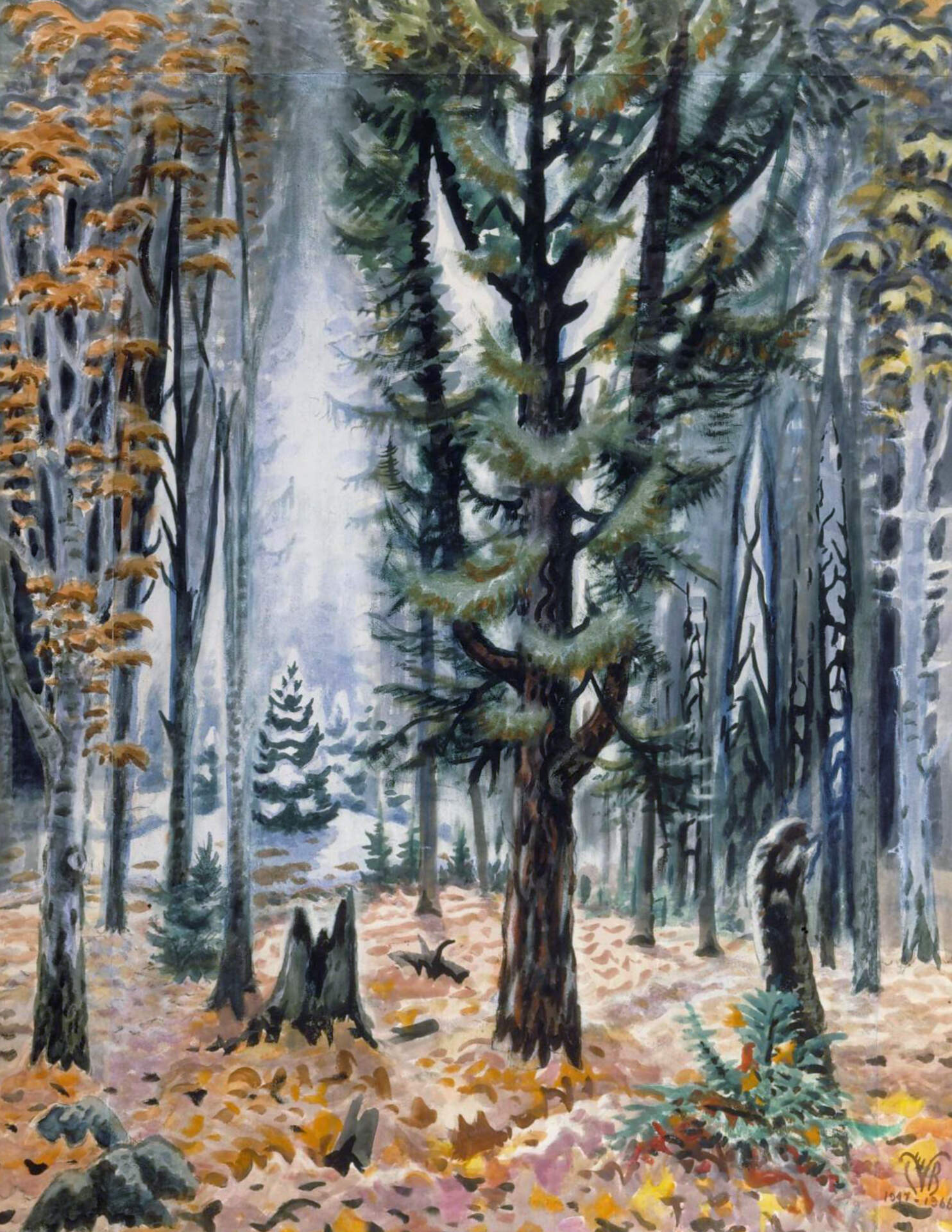Charles E. Burchfield (1893-1967)Hemlock in November
1947-66
watercolor on paper
42 x 32 1/2 inches
Image from the Burchfield Penney Art Center Archives
Hemlock in November is a bold work that expresses Charles Burchfield’s empathy with the natural world. His paintings from the last five years of his life were increasingly dreamlike; in this case, capturing the essence of a quiet snowfall in the interior of a forest surrounded by the muted tonalities of late autumn.
In the foreground, a large evergreen with branches extending beyond the picture plane sets a stately tone, which is reinforced by a lattice-like effect in nearby trees that recalls the tracery of Gothic windows. Burchfield often referenced the Gothic arch in his work, with its connotations of spirituality, linking it with arching trees and, in some cases, explicit cathedral-like forest structures in paintings with revealing titles such as Eye of God in the Woods (1949) and Glory to God (1953).
Among the other prominent trees in the painting is the one at left, perhaps a birch, which retains some of its foliage, while all around, the forest floor is covered in the yellows, browns, and oranges of fallen leaves. Deeper in the woods, it is snowing, covering smaller evergreens and the surrounding area in a hushed white. The overall impression is of a luminous glow radiating from a central patch of forest as if it contained some sort of pantheistic spirit.
Believed to be his last painting, Hemlock in November was begun in 1947 near Gowanda, New York, south of Buffalo, and finished almost twenty years later.[i] Throughout his career, Burchfield built upon a repertoire of images and motifs, creating abiding consistencies of place, theme, and composition through a variety of stylistic developments. This continuity gives his late work the strength of a lifetime of insight and inspiration.
Hemlock in November and other paintings from the 1960s demonstrate that Burchfield maintained his full creative power until the end of his life. A review of an exhibition in 1966, three months before he died, noted that:
The new exhibition of 16 large watercolors, completed within the last five years, must surely be the freshest, most attractive Burchfield show yet…. He has not greatly changed or enlarged the manner in which he has been painting since the mid-nineteen-forties (an expressionist celebration of nature with occasional echoes, however faint, of his former preoccupation with the American scene), but he has never painted with a surer touch or a more delicate one. He has never caught us up more effectively into his poetic vision of sunlight (or moonlight), skies, wind and flowers (or winter trees).[ii]
[i] Joseph S. Trovato, Charles Burchfield: Catalogue of Paintings in Public and Private Collections (Utica, NY: Munson-Williams-Proctor Institute, 1970), p. 314, no. 1333.
[ii] John Canaday, “A Poet’s Celebration of Nature,” New York Times (October 8, 1966), review of an exhibition at the Frank K. M. Rehn Galleries, Burchfield’s dealer, quoted in Trovato, p. 313.
Nancy Weekly, Burchfield Scholar, Burchfield Penney Art Center
